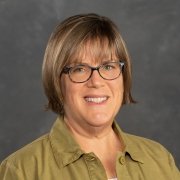What is Self-Directed Learning, Exactly?
MedEdPearls August 2022: How have you incorporated self-directed learning activities into your teaching in the medical and health professions?
Self-directed Learning (SDL) is an important component of the learning process as evidenced by research, accreditation bodies, student and resident success, and life-long education agencies; yet it is often mis-referenced or confused with self-regulated learning (SRL). The following definitions aim to help clarify the concepts:
Self-directed Learning: A “core attribute of professional identity that emphasizes personal responsibility and accountability for one’s own continuous growth in knowledge, skills, and attitudes within the context of relationships to patients, colleagues, team members, and responsibility to society.”
Self-regulated Learning: “the cyclical process of a learner reflecting on their gaps, planning, monitoring performance, and self-assessing.”
Looking more closely at these definitions, SRL is a learning process that gets repeated when a successful learner identifies a deficiency in their knowledge. This process is often prompted by an external source (upcoming test, teacher prompt, patient case, etc.) requiring more information. SRL is an element of the SDL approach to learning; however, SDL also involves self-imposed attributes such as curiosity, responsibility, adaptability, and perseverance. A self-directed learner seeks to know more, is genuinely interested in delving deeper to find out why, and takes responsibility for their learning.
So, how do we help learners cultivate their self-directed attributes? Here are just a few ideas:
- Ensure learning objectives are clearly written (following best practices—Bloom’s taxonomy or SMART goals) and share them with learners
- Provide resources to guide learners to additional information
- Incorporate reflection into learning activities
- Role-model (think aloud, demonstrate inquisitiveness) SDL behaviors
- Grant learners choice and flexibility in their approaches to learning (see Dec ‘21 #MedEdPearl)
- Transfer responsibility for learning to the learners; involve them in the teaching process (at the end of rounds, as learners, “What are you going to teach me tomorrow?”)
- Infuse SDL activities throughout the curriculum to help develop lifelong learning habits
- Teach learners about the learning process and identify methods used to foster deeper learning practices; explain the teaching methods you use
- Provide regular constructive feedback and coaching to help learners improve
- Help students identify knowledge gaps and deficiencies to stimulate learning (ask students what clinical questions they have after a patient encounter)
SDL can be fostered throughout the educational process and beyond at the curriculum, learning environment, and institutional levels. Self-directed learners are valued clinicians, colleagues, teachers, and researchers because they stay current in their fields, have a quest for knowledge, and strive for excellence. As educators, we can help those we teach be inquisitive, take responsibility, and develop into lifelong learners.
How have you incorporated self-directed learning activities into your teaching? Comment on the Harvard Macy Community Blog or share your ideas on LinkedIn using #MedEdPearls.
About the MedEdPearls Author

Jean Bailey
PhD
- Associate Professor; Associate Dean, Faculty Development, Virginia Commonwealth University School of Medicine
- Jean Bailey, PhD – Virginia Commonwealth University School of Medicine
- Carrie Bowler, EdD, MS, MLSCM (ASCP) – Mayo Clinic School of Continuous Professional Development
- Kristina Dzara, PhD, MMSc (Educators ’16; Assessment ’16; HCE 2.0 ’17) – Saint Louis University School of Medicine
- Shanu Gupta, MD, SFHM – University of South Florida Morsani College of Medicine and Tampa General Hospital
- Jennifer Hillyer, PhD – Northeast Ohio Medical University
- Larry Hurtubise, PhD, MA (HCE 2.0 '16) – The Ohio State University
- Anna Lama, EdD, MA – West Virginia University School of Medicine
- Machelle Linsenmeyer, EdD, NAOME (Assessment ’07) – West Virginia School of Osteopathic Medicine
- Skye McKennon, PharmD, BCPS, ACSM-GEI – Washington State University Elson S. Floyd College of Medicine
- Rachel Moquin, EdD, MA – Washington University School of Medicine
- Stacey Pylman, PhD – Michigan State University College of Human Medicine
- Leah Sheridan, PhD – Northeast Ohio Medical University
- Lonika Sood, MBBS, MHPE – Washington State University Elson S. Floyd College of Medicine
- Mark Terrell, EdD – Lake Erie College of Osteopathic Medicine
- Stacey Wahl, PhD – Virginia Commonwealth University School of Medicine
Harvard Macy Institute
Harvard Macy Institute
The Harvard Macy Institute educates, connects, and serves health care leaders around the globe by providing advanced faculty development programs, thought leadership, and impactful networking opportunities.
6 Programs

